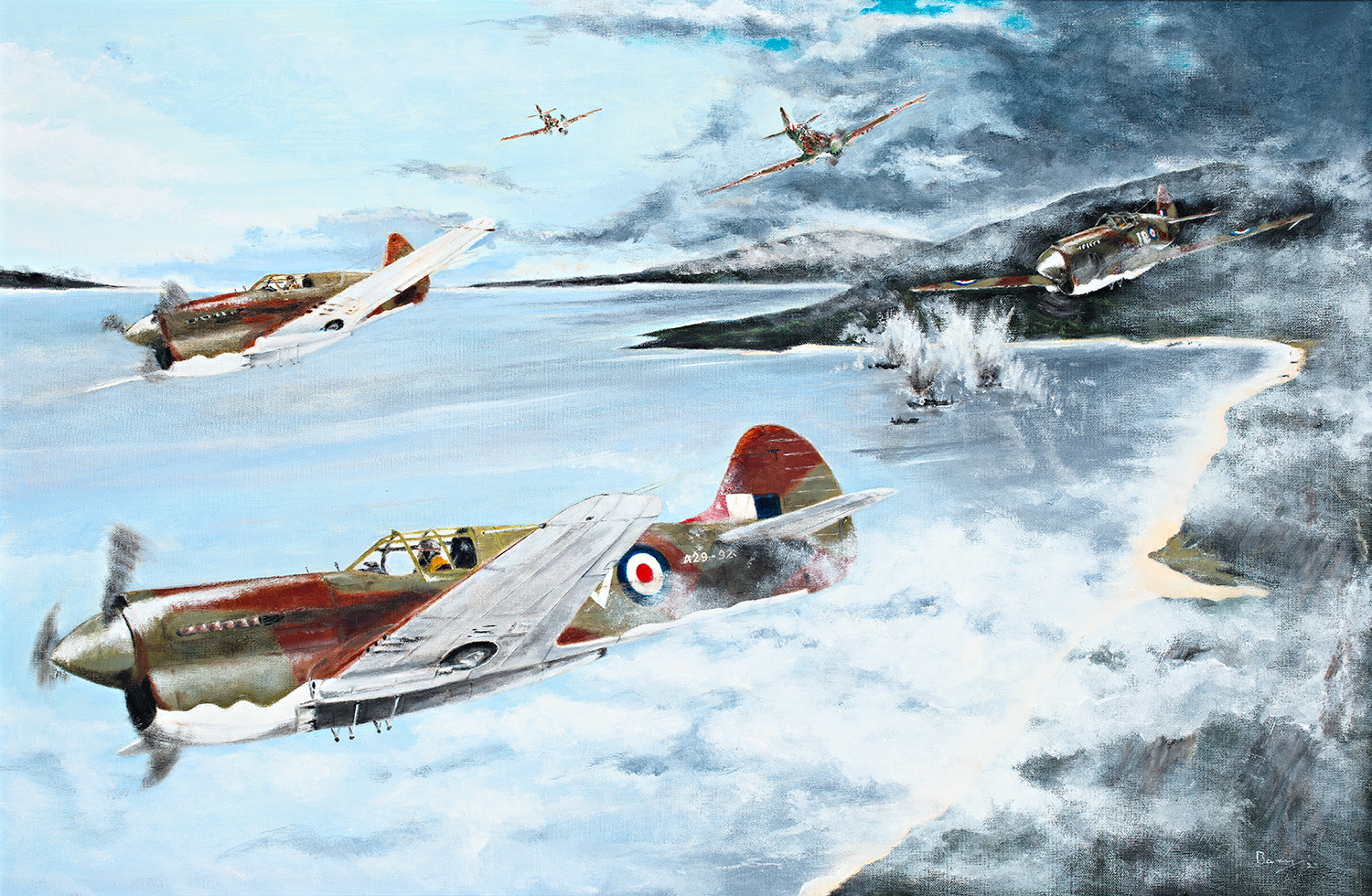
BARRY CLARKE
The Right Stuff
Oil on Canvas
101 x 71cm
The picture depicts Squadron Leader Peter St George Bruce Turnbull, Distinguished Flying Cross of Glen Innes as the Commanding Officer leading a combat mission of P40 Kittyhawk’s of RAAF 76 Squadron to attack enemy positions at Milne Bay, New Guinea, July 1942.
Peter Turnbull from Glen Innes, NSW at 20 years of age served with the 12/24 Light Horse Regiment as a Trooper prior to enlisting with the RAAF in January 1939. He completed flight training at Point Cook and in October 1939 was posted to No. 3 Squadron, Richmond which departed for action in the Mediterranean and Middle East Theatre in July 1940.
Flying Gloster Gauntlet, Gloster Gladiator, Hawker Hurricane and P-40 Tomahawk fighters during the North African and Syria- Lebanon campaigns Peter Turnbull proved to be an outstanding pilot and leader. He was promoted to Flight Lieutenant in 1941 and awarded the Distinguished Flying Cross for the 116 operational sorties and 200 combat hours he had flown, numerous enemy aircraft destroyed in the air and on the ground and “magnificent fighting spirit and great skill”.
He returned to Australia late 1941 to serve in the Southwest Pacific and joined No. 75 Squadron flying the P-40 Kittyhawk as a Flight Commander engaged in the defence of Port Moresby, one of the crucial early battles of the New Guinea campaign.
In May, 1942 he was appointed Commanding Officer of No. 76 Squadron and promoted to Squadron Leader returning to New Guinea and with No. 75 Squadron to enter the Battle of Milne Bay. Both squadrons were relentlessly engaged in air defence and offensive strikes against enemy shipping and other targets in support of Australian ground forces including attacks on the main Japanese invasion convoy.
General Sydney Rowell and Cyril Clowes both described the efforts of Nos. 75 and 76 RAAF Squadrons as “the decisive factor” in repulsing the invading forces.
In August,1942 the then 25 year old Squadron Leader Peter Turnbull was killed while diving on an enemy target. His aircraft was seen to roll at a low altitude and plummet into the jungle. Credited with a total of twelve aerial victories and respected by all ranks he epitomised the courage and skill of all the airmen.
Initially buried at Dowa Dowa, Milne Bay, he was subsequently interred in Bomana War Cemetery, Port Moresby. Milne Bay’s No 3 Airstrip was renamed Turnbull Field in his honour.













